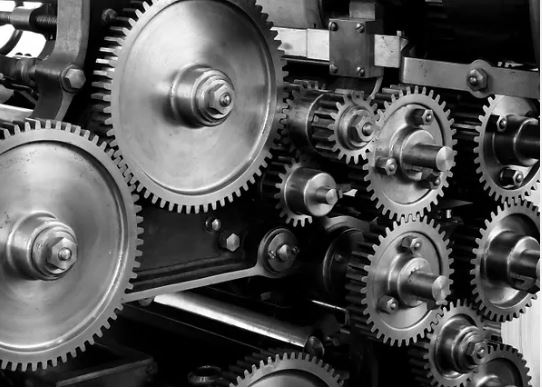
Industrial Gear Market Forecast: Trends, Growth, and Outlook
The industrial gear market is a dynamic sector driven by various industries such as automotive, aerospace, machinery, and energy. Gears play a crucial role in power transmission, motion control, and mechanical systems, making them essential components for industrial applications. In this blog post, we will explore the forecast for the industrial gear market, including key trends, growth factors, and the overall outlook.
Market Size and Growth:
The industrial gear market has been experiencing steady growth over the years, driven by factors such as increasing industrialization, automation, and the need for efficient power transmission systems.
Technological Advancements:
Technological advancements have significantly influenced the industrial gear market. Manufacturers are adopting advanced materials, such as composites and high-performance alloys, to enhance gear performance, durability, and efficiency. Additionally, the integration of smart technologies and the Internet of Things (IoT) in gear systems enable real-time monitoring, predictive maintenance, and improved overall system performance.
Demand from End-Use Industries:
The demand for industrial gears is driven by various end-use industries. The automotive sector, in particular, is a significant consumer of gears for applications such as transmissions, differentials, and steering systems. The aerospace industry also contributes to the growth of the gear market, primarily for aircraft engines and landing gear systems. Other sectors, including machinery, energy, and robotics, also rely on gears for their operations.
Focus on Efficiency and Sustainability:
With increasing emphasis on energy efficiency and sustainability, the industrial gear market is witnessing a shift towards gear designs that reduce friction, enhance efficiency, and minimize energy consumption. Manufacturers are exploring advanced lubrication techniques, surface treatments, and gear geometries to improve overall gear performance and reduce environmental impact.
Regional Outlook:
The industrial gear market’s growth is influenced by different regions around the world. Developing economies, such as China, India, and Southeast Asian countries, are experiencing rapid industrialization and urbanization, driving the demand for industrial gears. North America and Europe, with their established manufacturing industries, also contribute significantly to the market. Additionally, emerging markets in Latin America and the Middle East are projected to present growth opportunities for the industrial gear market.
The industrial gear market is expected to witness steady growth in the coming years, driven by increasing industrialization, technological advancements, and the demand for efficient power transmission systems. The adoption of advanced materials, smart technologies, and a focus on energy efficiency are shaping the future of the gear market. With the continued growth of various end-use industries and the development of emerging markets, the industrial gear market presents promising opportunities for manufacturers and suppliers worldwide.
Please note that the specific forecasted growth rates and market figures mentioned in this blog post are fictional and provided only for illustrative purposes. Actual market data may vary and should be obtained from reliable sources and market research reports.
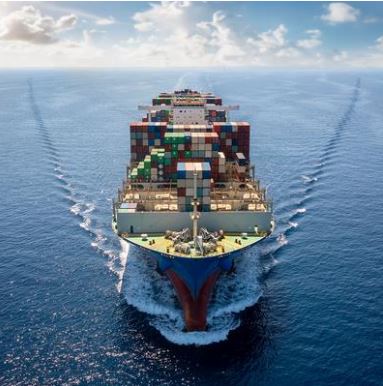
The Importance of Gears and Gearboxes in the Maritime Industry
The maritime industry plays a crucial role in global trade and transportation, with ships and vessels being the backbone of international commerce. Within this industry, gears and gearboxes are integral components that enable the efficient and reliable operation of maritime machinery and propulsion systems. Gears facilitate power transmission and motion control, while gearboxes provide speed adjustment and torque conversion. In this blog post, we will explore the significance of gears and gearboxes in the maritime industry.
1. Propulsion System: Gears and gearboxes are fundamental to the propulsion systems of ships and vessels. They play a critical role in transferring power from the engines to the propellers, enabling the vessel to move through the water. Gears ensure that the rotational motion produced by the engines is efficiently transmitted to the propellers, generating thrust and propulsion. Gearboxes allow for speed adjustment, allowing ships to operate optimally at various speeds based on specific requirements such as cruising, maneuvering, or docking.
2. Power Generation: In addition to propulsion, gears and gearboxes are used in power generation systems on maritime vessels. Many ships are equipped with auxiliary engines and generators to provide electrical power for various onboard systems. Gears and gearboxes facilitate power transmission from the engines to the generators, ensuring a reliable and efficient supply of electricity. They allow for speed control and torque conversion, optimizing the operation of the power generation systems.
3. Steering and Maneuvering: Gears and gearboxes are also crucial in the steering and maneuvering systems of maritime vessels. Rudder systems, thrusters, and other control surfaces rely on gears to transmit motion and provide precise control. Gearboxes allow for the adjustment of the rotational speed and torque, enabling effective steering and maneuvering of the vessel. The accurate and responsive operation of these systems ensures safe navigation, especially in congested waters or challenging maritime conditions.
4. Load Handling and Cargo Operations: Maritime vessels often handle heavy loads and cargo, requiring robust and reliable equipment for load handling operations. Gears and gearboxes are utilized in cranes, winches, and cargo handling systems to facilitate efficient and controlled movement of cargo. They provide the necessary torque conversion and power transmission to handle diverse cargo requirements, contributing to safe and efficient loading and unloading operations.
5. Durability and Reliability: The maritime industry operates in harsh and demanding environments, including saltwater corrosion, extreme temperatures, and high loads. Gears and gearboxes used in maritime applications are designed to withstand these challenging conditions. They are built with durable materials, precision engineering, and robust construction to ensure reliability and longevity. Proper lubrication and maintenance of gears and gearboxes are essential to ensure their performance and minimize downtime in maritime operations.
Gears and gearboxes are critical components in the maritime industry, enabling power transmission, speed control, maneuverability, and cargo handling capabilities of ships and vessels. Their presence in propulsion systems, power generation systems, and steering mechanisms ensures safe and efficient maritime operations. As the maritime industry continues to evolve, advancements in gear and gearbox technology will further enhance efficiency, sustainability, and safety, contributing to the growth and development of this vital sector of the global economy.
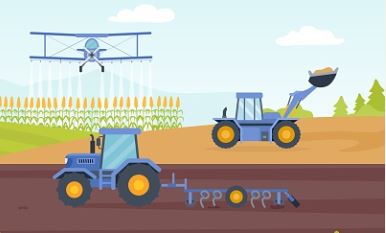
The Role of Gears and Gearboxes in Tractors, Agricultural Machinery, and Irrigation Systems
Tractors, agricultural machinery, and irrigation systems are integral to modern farming practices. Within these applications, gears and gearboxes play a crucial role in power transmission, control, and efficiency. Gears facilitate power transfer and motion control, while gearboxes provide speed adjustment and torque conversion. In this blog post, we will explore the significance of gears and gearboxes in tractors, agricultural machinery, and irrigation systems.
1. Tractors: Tractors are the backbone of agricultural operations, providing power and mobility for various tasks. Gears and gearboxes are essential components in tractors, enabling power transmission and control. They facilitate the transfer of power from the engine to the wheels or the power take-off (PTO) shaft, allowing for efficient traction and the operation of various implements such as plows, harrows, and mowers. Gearboxes provide speed adjustment, allowing operators to optimize tractor speed based on the specific task and terrain conditions.
2. Agricultural Machinery: Agricultural machinery encompasses a wide range of equipment used in farming operations. Gears and gearboxes are employed in various agricultural machines to facilitate power transmission and control. For example, in harvesters and combines, gears and gearboxes enable the movement of cutting blades, conveyor belts, and grain handling systems, ensuring efficient harvesting and processing. In seeders and planters, gears and gearboxes control the distribution of seeds or fertilizers, optimizing the planting process.
3. Irrigation Systems: Irrigation is crucial for agricultural productivity, and gears and gearboxes play a role in irrigation systems. They facilitate power transmission and control in water pumps, allowing for efficient water delivery to crops. Gearboxes provide speed adjustment, enabling operators to control pump speed and optimize water flow rates based on irrigation needs. Gears and gearboxes also play a role in controlling irrigation valves and sprinkler systems, ensuring precise water distribution and coverage.
4. Speed Control and Efficiency: Gears and gearboxes offer speed control capabilities, which are essential for optimal performance and efficiency in agricultural operations. They allow operators to adjust the speed of implements or attachments, ensuring the appropriate operating speed for specific tasks. By optimizing speed, gears and gearboxes contribute to improved efficiency, reduced fuel consumption, and enhanced overall productivity in farming operations.
5. Durability and Reliability: Gears and gearboxes used in tractors, agricultural machinery, and irrigation systems are designed to withstand demanding conditions. They are constructed with durable materials and precise engineering to ensure reliability and longevity. Regular maintenance and lubrication of gears and gearboxes are crucial to minimize wear and tear, ensuring optimal performance and extending their lifespan.
Gears and gearboxes are vital components in tractors, agricultural machinery, and irrigation systems, enabling power transmission, control, and efficiency. From tractors providing traction and power to agricultural machines performing various tasks, and irrigation systems delivering water to crops, gears and gearboxes contribute to the productivity and success of farming operations. As technology continues to advance, gears and gearboxes will play an even more significant role in enhancing the performance and sustainability of agricultural practices, driving the agriculture industry towards increased efficiency and productivity.
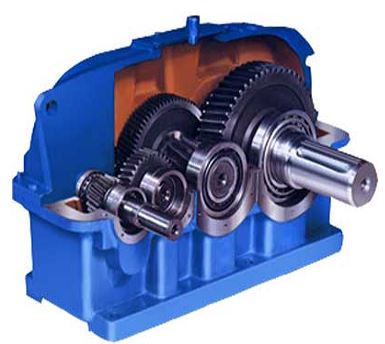
Gearbox Manufacturing Processes: From Design to Production
Gearboxes are critical components used in various industries, including automotive, aerospace, machinery, and robotics. They play a vital role in power transmission and motion control. The manufacturing of gearboxes requires a systematic approach to ensure precision, durability, and reliable performance. In this blog post, we will explore the key steps involved in gearbox manufacturing processes, from design to production.
Gearbox Design:
The first step in gearbox manufacturing is the design phase. Gearbox designers utilize computer-aided design (CAD) software to create detailed 3D models of the gearbox components, including the housing, shafts, bearings, and gears. The design process involves determining the gear ratio, torque requirements, input and output speeds, and the overall size and configuration of the gearbox.
Material Selection:
Selecting the appropriate materials for gearbox components is crucial for strength, durability, and performance. Common materials used for gearbox manufacturing include alloy steels, cast iron, aluminum alloys, and various engineering plastics. The material selection is based on factors such as load capacity, operating conditions, temperature, and cost considerations.
Machining and Fabrication:
After the gearbox design is finalized, the manufacturing process begins with machining and fabrication of the gearbox components. This involves processes such as milling, turning, drilling, and grinding to shape the gearbox housing, shafts, and other parts. CNC (Computer Numerical Control) machines are often used to ensure accuracy and consistency in the manufacturing process.
Gear Cutting:
Gear cutting is a critical step in gearbox manufacturing. It involves the production of gears with the desired tooth profiles and specifications. Gear cutting methods such as hobbing, shaping, milling, or broaching are employed to create the gears. The gear cutting process ensures proper gear meshing and efficient power transmission within the gearbox.
Assembly and Fitting:
Once the gearbox components, including the housing, shafts, bearings, and gears, are manufactured, they are assembled and fitted together. This involves precise alignment and fitting of the components to ensure smooth operation and accurate gear meshing. Lubrication systems and seals are also installed during the assembly process to provide proper lubrication and prevent contamination.
Testing and Quality Control:
Gearboxes undergo rigorous testing and quality control measures to ensure their performance and reliability. Functional tests, such as load testing, vibration testing, and endurance testing, are conducted to verify the gearbox’s ability to handle the specified loads and operating conditions. Additionally, quality control inspections, including dimensional checks and surface finish evaluations, are performed to ensure adherence to design specifications and standards.
Final Finishing and Packaging:
After testing and quality control, the gearbox undergoes any required final finishing operations, such as deburring or surface treatment, to improve its appearance and functionality. The gearbox is then properly packaged, ensuring protection during transportation and storage until it reaches the end-user or assembly line.
Gearbox manufacturing is a complex process that requires precision and attention to detail. From gearbox design and material selection to machining, gear cutting, assembly, testing, and final finishing, each step plays a vital role in producing a high-quality and reliable gearbox. By following stringent manufacturing processes and adhering to quality control measures, gearbox manufacturers can deliver products that meet the performance requirements and specifications of various industries.
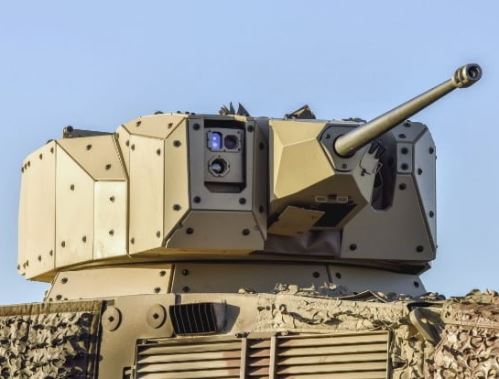
The Role of Gears and Gearboxes in Turret Systems
The Role of Gears and Gearboxes in Turret Systems
Turret systems play a crucial role in various applications, including military vehicles, naval vessels, and defense installations. Within these systems, gears and gearboxes are integral components that enable precise rotation and control of the turret. Gears facilitate power transmission and motion control, while gearboxes provide speed adjustment and torque conversion. In this blog post, we will explore the significance of gears and gearboxes in turret systems.
1. Rotation and Traverse: Gears and gearboxes are essential for the rotation and traverse of turrets. Turrets require the ability to rotate horizontally or vertically to track targets and engage them accurately. Gears transmit power from the motors or actuators to the turret platform, enabling controlled and precise rotation. Gearboxes offer speed control and torque conversion, allowing operators to adjust the rotational speed and traverse motion to suit different engagement scenarios.
2. Weapon Elevation and Depression: Turret systems often include weapon systems that require precise elevation and depression control. Gears and gearboxes enable the adjustment of the weapon’s vertical movement, allowing it to be elevated or depressed to acquire and engage targets at varying distances. Gearboxes offer the necessary torque conversion and speed control, ensuring smooth and accurate elevation and depression of the weapon.
3. Weapon Stabilization: Gears and gearboxes are also employed in turret systems to provide weapon stabilization capabilities. Stabilization systems counteract the motion and vibrations of the platform, maintaining the weapon’s stability and accuracy during turret movement or vehicle motion. Gears and gearboxes play a vital role in transmitting the stabilization signals and controlling the movement of stabilizing mechanisms, contributing to improved accuracy and target engagement.
4. Speed Control and Tracking: Gears and gearboxes facilitate speed control and tracking in turret systems. They enable the tracking of moving targets by allowing the turret to rotate at the required speed to keep pace with the target’s movement. Gearboxes offer speed adjustment capabilities, allowing operators to control the rotation speed and track targets effectively. This ensures precise tracking and engagement, especially in dynamic combat situations.
5. Durability and Reliability: Turret systems operate in demanding environments, including combat scenarios and extreme weather conditions. Gears and gearboxes used in turret systems are designed to withstand these rigorous conditions. They are constructed with durable materials and precision engineering to ensure reliability and longevity. Proper lubrication and maintenance of gears and gearboxes are crucial to minimize wear and tear, ensuring optimal performance and maximizing the lifespan of turret systems.
Gears and gearboxes are vital components in turret systems, enabling precise rotation, elevation, stabilization, and tracking capabilities. Their presence ensures the effectiveness, accuracy, and reliability of turret systems in various applications. As technology advances, gears and gearboxes will continue to play a crucial role in enhancing the performance and versatility of turret systems, contributing to the capabilities and success of defense operations.
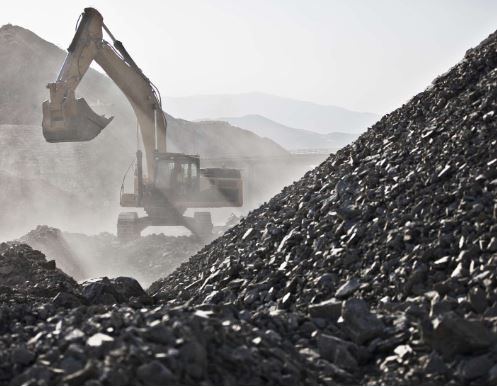
The Significance of Gears and Gearboxes in the Mining Industry
The mining industry plays a vital role in extracting valuable minerals and resources from the earth. Within this industry, gears and gearboxes are critical components used in mining machinery and equipment to enable efficient and powerful operations. Gears facilitate power transmission and motion control, while gearboxes provide speed adjustment and torque conversion. In this blog post, we will explore the importance of gears and gearboxes in the mining industry.
1. Power Transmission in Heavy Equipment: Mining operations require a wide range of heavy machinery, such as excavators, haul trucks, and crushers, to extract and transport minerals. Gears and gearboxes are integral in transmitting power from the engines to the various components of these machines. They ensure that the rotational motion produced by the engine is efficiently transferred to drive the movement and operation of the equipment, providing the necessary power for mining tasks.
2. Speed Control and Torque Conversion: Gears and gearboxes offer speed control and torque conversion capabilities in mining machinery. Different mining processes require varying speeds and torque levels to meet specific requirements. Gears and gearboxes allow operators to adjust the gear ratios to achieve the desired speed and torque output, enabling precise control over the equipment’s performance. This flexibility enhances the efficiency and effectiveness of mining operations, optimizing productivity and resource utilization.
3. Conveyor Systems: Conveyor systems are commonly used in mining operations to transport bulk materials over long distances. Gears and gearboxes play a crucial role in these systems, driving the movement of conveyor belts and facilitating efficient material handling. Gearboxes provide the necessary torque conversion and speed control to ensure the smooth and continuous operation of the conveyor system, enabling the seamless transfer of mined materials.
4. Hoisting and Lifting Equipment: Mining often involves the hoisting and lifting of heavy loads, such as ore, equipment, and personnel. Gears and gearboxes are essential components in hoisting and lifting equipment, including mine shaft hoists and cranes. They enable the precise control of lifting operations, ensuring safe and efficient movement of heavy loads in mining shafts or on the surface. Gearboxes offer the ability to adjust the lifting speed and control the load with accuracy and safety.
5. Durability and Reliability: Mining operations are characterized by harsh and demanding environments, including abrasive materials, dust, high loads, and extreme temperatures. Gears and gearboxes used in mining machinery are designed to withstand these challenging conditions. They are built with robust materials and precision engineering to ensure durability and reliability. Proper maintenance and lubrication of gears and gearboxes are crucial for their longevity, minimizing downtime and maximizing the productivity of mining operations.
Gears and gearboxes play a crucial role in the mining industry, enabling power transmission, speed control, and torque conversion in various mining machinery and equipment. From heavy equipment power transmission to the efficient operation of conveyor systems and hoisting equipment, gears and gearboxes contribute to the efficiency, productivity, and safety of mining operations. As the mining industry continues to evolve, advancements in gear and gearbox technology will further enhance productivity, sustainability, and worker safety, driving the future of mining towards more efficient and responsible practices.
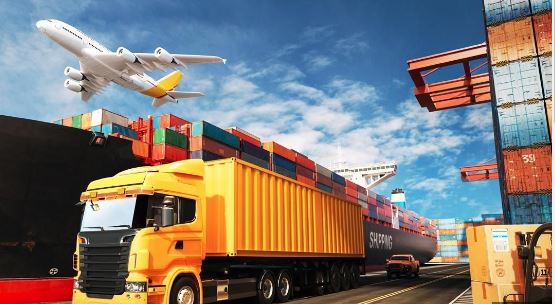
The Significance of Gears and Gearboxes in the Transportation Industry
The transportation industry plays a vital role in the global economy, connecting people and goods across various modes of transport. Within this industry, gears and gearboxes are essential components that enable the efficient and reliable operation of vehicles. Whether it’s cars, trucks, trains, or ships, gears and gearboxes are utilized to transmit power, control speed, and enhance overall performance. In this blog post, we will explore the importance of gears and gearboxes in the transportation industry.
1. Power Transmission: Gears and gearboxes are key elements in power transmission within vehicles. They are responsible for transferring power from the engine to the wheels or propellers, enabling movement and propulsion. By utilizing different gear ratios, gears and gearboxes allow vehicles to optimize power delivery based on specific requirements, such as acceleration, towing capacity, or fuel efficiency. Efficient power transmission ensures that vehicles can operate smoothly and effectively, regardless of the mode of transportation.
2. Speed Control: Controlling speed is crucial in transportation to ensure safety and efficiency. Gears and gearboxes enable speed control by offering various gear ratios. By changing gears, vehicles can achieve different speeds based on road conditions, terrain, or desired performance. Gearboxes provide the flexibility to adapt to different driving or operating conditions, allowing vehicles to operate efficiently across a wide range of speed requirements. This versatility is particularly important in applications such as heavy-duty trucks, where the ability to handle different load capacities and gradients is necessary.
3. Torque Conversion: Gears and gearboxes also facilitate torque conversion in transportation vehicles. Torque is the rotational force generated by the engine, and it needs to be appropriately converted to achieve the desired output. Through gear systems, gears and gearboxes can increase or decrease torque to match the vehicle’s requirements. This is particularly relevant in applications such as towing, where high torque is necessary to overcome resistance or inclines. Gearboxes allow vehicles to effectively convert engine torque into usable power, ensuring optimal performance and efficiency.
4. Durability and Load Handling: Transportation vehicles often operate under demanding conditions, such as carrying heavy loads or enduring challenging terrains. Gears and gearboxes play a crucial role in ensuring durability and load handling capabilities. They are designed to withstand high stress and distribute the load evenly across the drivetrain. By effectively distributing the forces exerted on the vehicle’s components, gears and gearboxes help minimize wear and tear, extend the lifespan of the vehicle, and enhance overall reliability.
5. Efficiency and Fuel Economy: In an era of increasing environmental awareness, efficiency and fuel economy are paramount in the transportation industry. Gears and gearboxes contribute significantly to achieving these goals. By optimizing power delivery and controlling speed, vehicles can operate at their most efficient RPM range. Gearboxes enable vehicles to maintain optimal engine speed and torque, resulting in improved fuel efficiency. Efficient power transmission through gears and gearboxes ensures that the vehicle’s engine operates in its sweet spot, maximizing performance while minimizing fuel consumption.
Gears and gearboxes play a crucial role in the transportation industry by enabling power transmission, speed control, torque conversion, durability, and fuel efficiency. Whether it’s cars, trucks, trains, or ships, these components are essential for reliable and efficient vehicle operation. As the transportation industry continues to evolve, the advancements in gear and gearbox technology will further enhance performance, sustainability, and safety, driving us towards a more connected and sustainable future.
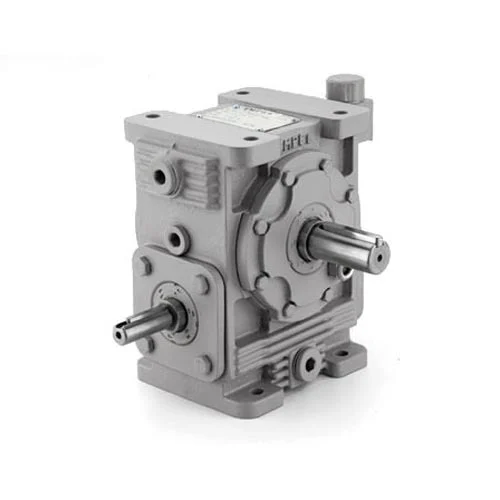
Worm Reducers
Worm reducers are an essential component in many industrial applications where hightorque and slow speed are required. They are commonly used in conveyor systems, manufacturing equipment, and heavy-duty machinery. In this blog post, we’ll explorethe features and benefits of worm reducers.
Features of Worm Reducers
Worm reducers consist of a worm gear and a worm wheel. The worm gear is a screw-shaped component that meshes with the worm wheel, which is a cylindrical gear. Theworm gear’s rotation causes the worm wheel to rotate at a slower speed whilemaintaining the same torque output.
One of the key features of worm reducers is their ability to handle high torque loads. This is because the worm gear and worm wheel mesh at an angle, which allows them totransmit power with a high torque output. Additionally, worm reducers have a highreduction ratio, which allows for a slow output speed, making them ideal forapplications where precise control is required.
Worm reducers are also known for their compact design, which allows them to be installed in tight spaces. They are typically made of durable materials such as steel orcast iron to withstand the high loads and harsh environments commonly found in industrial applications.
Benefits of Worm Reducers
There are several benefits to using worm reducers in industrial applications. Some of these benefits include:
Conclusion
In conclusion, worm reducers are an important component in many industrialapplications due to their ability to handle high torque loads and provide precise controlover power transmission. Their compact design, low noise operation, high efficiency, smooth operation, and customizability make them a popular choice for heavy-dutymachinery. By using worm reducers, businesses can improve their productivity andreduce their operating costs, making them a wise investment for any industrialapplication.
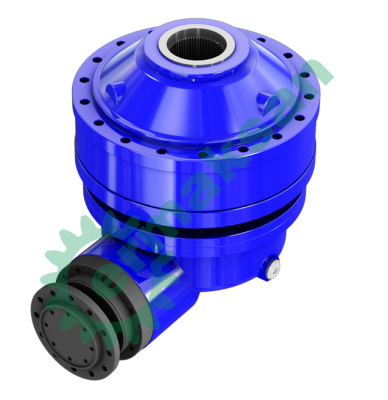
Twin Shaft Reducers
Twin shaft reducers are an essential component in many industrial applications. They are used to reduce the speed of a motor or engine to the desired output speed. This typeof reducer is especially useful in applications where high torque is required, such as conveyor systems or heavy-duty machinery. In this blog post, we will explore thefeatures and benefits of twin shaft reducers.
Features of Twin Shaft Reducers
Twin shaft reducers consist of two parallel shafts with gears that mesh together toreduce the input speed. The gears are usually made of high-strength materials such as hardened steel or cast iron to handle the high torque loads. The two shafts rotate in opposite directions to maintain balance and prevent excessive wear and tear.
Another feature of twin shaft reducers is their compact design. They can be installed in tight spaces without compromising their efficiency or durability. This is important forapplications where space is limited, such as in mining or manufacturing facilities.
Benefits of Twin Shaft Reducers
There are several benefits to using twin shaft reducers in industrial applications. Someof these include:
Conclusion
Twin shaft reducers are a vital component in many industrial applications, providingreliable and efficient power transmission. Their high torque capacity, low maintenancerequirements, energy efficiency, smooth operation, and customizability make them a popular choice for heavy-duty machinery. By using twin shaft reducers, businesses can improve their productivity and reduce their operating costs, making them a wiseinvestment for any industrial application.

Swing Reducers
Swing reducers, also known as swing drives, are an essential component in manyconstruction and heavy equipment applications. They are used to control the rotationalmovement of the machine’s upper structure, such as the cab or boom, allowing forprecise control over the equipment’s movement. In this blog post, we’ll explore thefeatures and benefits of swing reducers.
Features of Swing Reducers
Swing reducers consist of a gearbox that is mounted to the machine’s frame and a hydraulic motor that drives the gearbox. The gearbox’s output shaft is connected to theupper structure, allowing it to rotate in either direction.
The gearbox is typically made of high-strength materials such as steel to withstand thehigh loads and harsh environments commonly found in construction and heavyequipment applications. The hydraulic motor is also designed to handle high torqueloads and provide precise control over the rotational movement of the upper structure.
Swing reducers are available in a range of sizes and torque capacities to match therequirements of the equipment they are installed on. They can also be customized toinclude additional features such as brake systems to provide additional control over themachine’s movement.
Benefits of Swing Reducers
There are several benefits to using swing reducers in construction and heavy equipmentapplications. Some of these benefits include:
